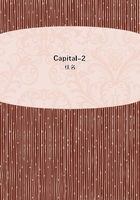
第78章
The actual repairs or patchwork require expenditures of capital and labour which are not contained in the originally advanced capital and cannot therefore be replaced and covered, at least not always, by the gradual replacement of the value of the fixed capital. For instance if the value of the fixed capital is £10,000 and its total life of 10 years, then these £10,000, having been entirely converted into money after the lapse of ten years, will replace only the value of the capital originally invested, but they do not replace the capital, or labour, added in the meantime for repairs. This is an additional component part of the value, which is not advanced all at one time but whenever a need for it arises, and the various times for advancing it are in the very nature of things accidental. All fixed capital demands such subsequent, dosed out, additional outlay of capital for instruments of labour and labour-power.
The damage which separate parts of the machinery, etc., may incur is naturally accidental and so are therefore the repairs involved. Nevertheless two kinds of repairs are to be distinguished in the general mass, which are of a more or less fixed character and fall within various periods of the life of fixed capital. These are the ailments of childhood and the far more numerous ailments of the post- middle durability period. A machine for instance may be commissioned in ever so perfect a condition, still actual use will reveal shortcomings which must be remedied by subsequent labour. On the other hand the more a machine passes beyond the mid-durability point, the more therefore the normal wear and tear has accumulated and the more the material of which it consists has been worn out and become decrepit, the more numerous and considerable will be the repairs required to keep it going for the remainder of its average durability. It is the same with an old man, who incurs more medical expenses to keep from dying prematurely than a young and strong man. So in spite of its accidental character repair work is unevenly distributed over the various periods of life of fixed capital.
>From the foregoing and from the generally accidental character of repair work on machines its follows:
In one respect the actual expenditure of labour-power and instruments of labour on repairs is accidental, like the circumstances which necessitate these repairs; the amount of the repairs needed is unevenly distributed over the different periods of fixed capital's life. In other respects it is taken for granted in estimating the average life of fixed capital that it is constantly kept in good working order, partly by cleaning (including the cleaning of the premises), partly by repairs as often as required.
The transfer of value through wear and tear of fixed capital is calculated on its average life, but this average life itself is based on the assumption that the additional capital required for maintenance purposes is continually advanced.
But then it is also evident that the value added by this extra expenditure of capital and labour cannot enter into the price of the commodities concerned at the same time as it is incurred. For example, a manufacturer of yarn cannot sell his yarn dearer this week than last, merely because one of his wheels broke or a belt tore this week. The general costs of spinning have not been changed in any way by this accident in some individual factory. Here, as in all determinations of value, the average decides.
Experience shows the average occurrence of such accidents and the average volume of the maintenance and repair work necessary during the average life of the fixed capital invested in a given branch of business. This average expense is distributed over the average life and added to the price of the product in corresponding aliquot parts; hence it is replaced by means of its sale.
The additional capital which is thus replaced belongs to the circulating capital, although the manner of its expenditure is irregular. As it is of paramount importance to remedy every damage to machinery immediately, every comparatively large factor employs in addition to the regular factory force special personnel -- engineers, carpenters, mechanics, locksmiths, etc. Their wages are a part of the variable capital and the value of their labour is distributed over the product. On the other hand the expenses for means of production are calculated on the basis of the above-mentioned average, according to which they form continually a part of the value of the product, although they are actually advanced in irregular periods and therefore enter into the product or the fixed capital in irregular periods.
This capital, expended in repairs properly so called, is in many respects a capital sui generis, which can be classed neither as circulating nor as fixed capital, but belongs with greater justification to the former, since it figures among the running expenses.